Ultimate SD Card Guide for Beginners
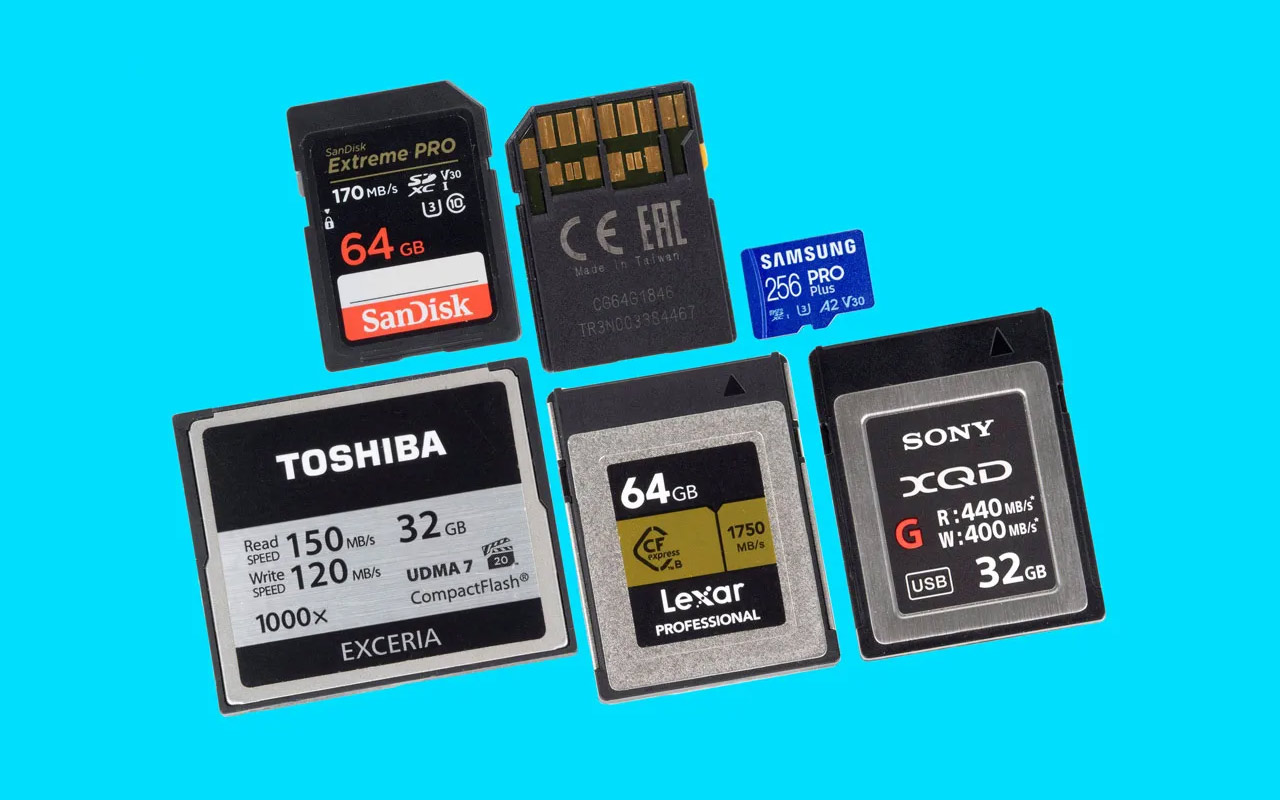
What is an SD Card?
SD cards are like tiny digital lockers storing all the cool stuff from your camera – photos, videos, and more! But figuring out which one is best for your camera can feel like a big puzzle. No worries! This guide will make it super easy to pick the perfect SD card just for you and your camera.
Understanding Different Types of Memory Cards

Memory cards come in various formats and types, each with its own specifications and purposes. Here’s an overview of the most common types:
Secure Digital (SD) Cards
SD cards are ubiquitous in the world of digital cameras and other devices. They’re available in different capacities and speed classes, catering to a wide array of devices.
SDHC (Secure Digital High Capacity) Cards
Offering a storage range from 4GB to 32GB, SDHC cards are suitable for many consumer cameras and devices. However, they might not support larger capacities.
SDXC (Secure Digital Extended Capacity) Cards
With storage capacities starting from 64GB and reaching up to 2TB, SDXC cards are ideal for devices that require extensive storage, such as high-resolution cameras and video recorders.
SDUC (Secure Digital Ultra Capacity) Cards
SDUC (Secure Digital Ultra Capacity) cards are top-tier memory cards known for their incredibly large storage space. They’re perfect for high-end gadgets like advanced cameras, offering ample room to store lots of data.
MicroSD Cards
MicroSD cards are miniature versions of SD cards and are commonly used in smartphones, action cameras, and drones. They offer varying capacities and speed classes, making them versatile for different devices.
CompactFlash (CF) Cards
Though less common now, CF cards were once widely used in professional-grade cameras and recorders due to their durability and faster write speeds.
XQD Cards
Developed for modern high-speed cameras, XQD cards provide impressive read and write speeds, offering reliability and performance for professional photographers.
CF Express Type A and Type B
CF Express cards, available in Type A and Type B formats, represent the latest in memory card technology. These cards offer incredibly fast speeds and large capacities, making them ideal for high-end cameras and devices.
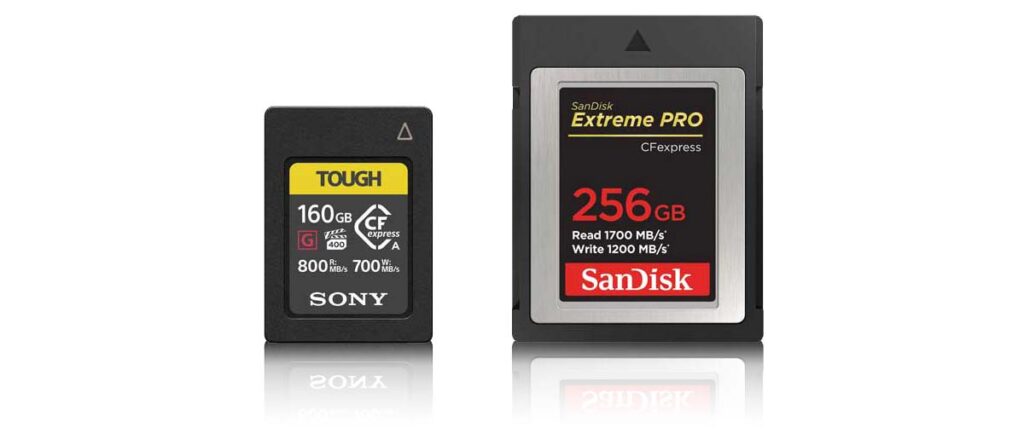
Choosing between CFexpress Type A and Type B comes down to size and speed. Type A is smaller, perfect for Sony cameras that prioritize compactness, but slower, offering up to 1GB/s read and 500MB/s write speeds. Type B is larger, offers double the speed (2GB/s read, 1GB/s write), and is compatible with various cameras from brands like Canon, Nikon, and Panasonic. Consider your camera’s compatibility, shooting needs, and budget before making your choice
Decoding SD Card Specifications
When choosing an SD card, it’s essential to decipher the symbols and classifications printed on them. Here’s a breakdown of these specifications in simpler terms:
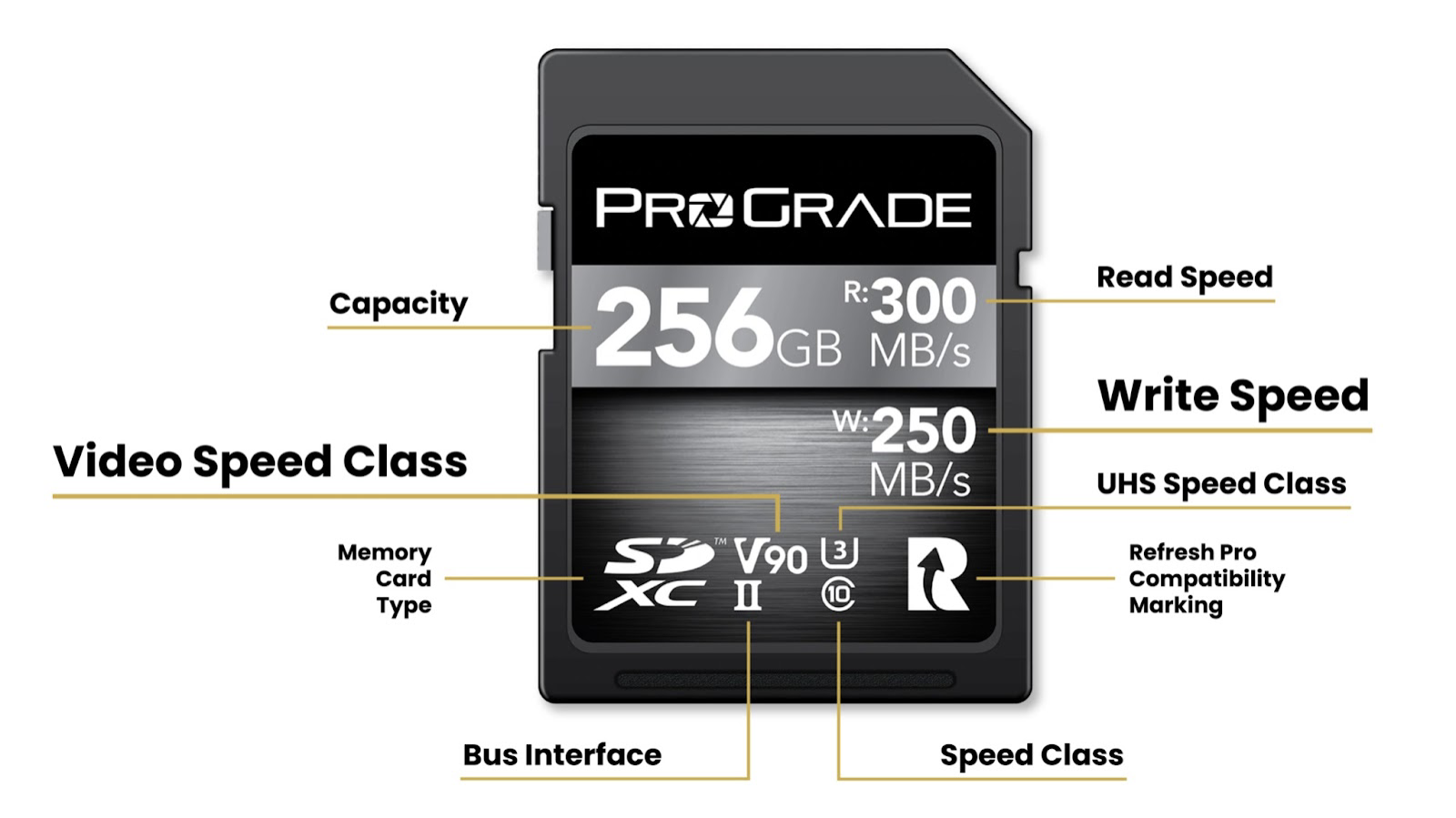
Think of your SD card as a highway for data. The wider the road, the faster information can travel. This is where the bus mark comes in. It’s like the “speed limit” of your card, indicating the maximum data transfer rate between the card and your device.
Speed Class Rating
The Speed Class Rating (Class 2, 4, 6, 10) indicates the minimum sustained write speed in megabytes per second (MB/s). The higher the class number, the faster the card’s performance. For typical photo and video use, a Class 10 card is suitable.
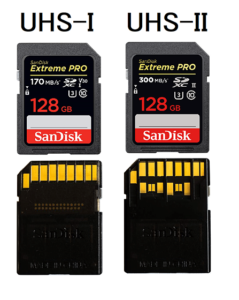
UHS Speed Class
Ultra High-Speed (UHS) cards are available in three categories: UHS-I, UHS-II, and UHS-III. They offer faster data transfer rates than standard Speed Class cards. UHS-I starts at a minimum write speed of 10 MB/s, while UHS-III provides even swifter performance for demanding tasks.
Video Speed Class
The Video Speed Class (V6, V10, V30, V60, V90) represents the card’s minimum sustained write speed for recording video. For example, a V30 card ensures a minimum write speed of 30 MB/s, ideal for capturing 4K video smoothly without frame drops.
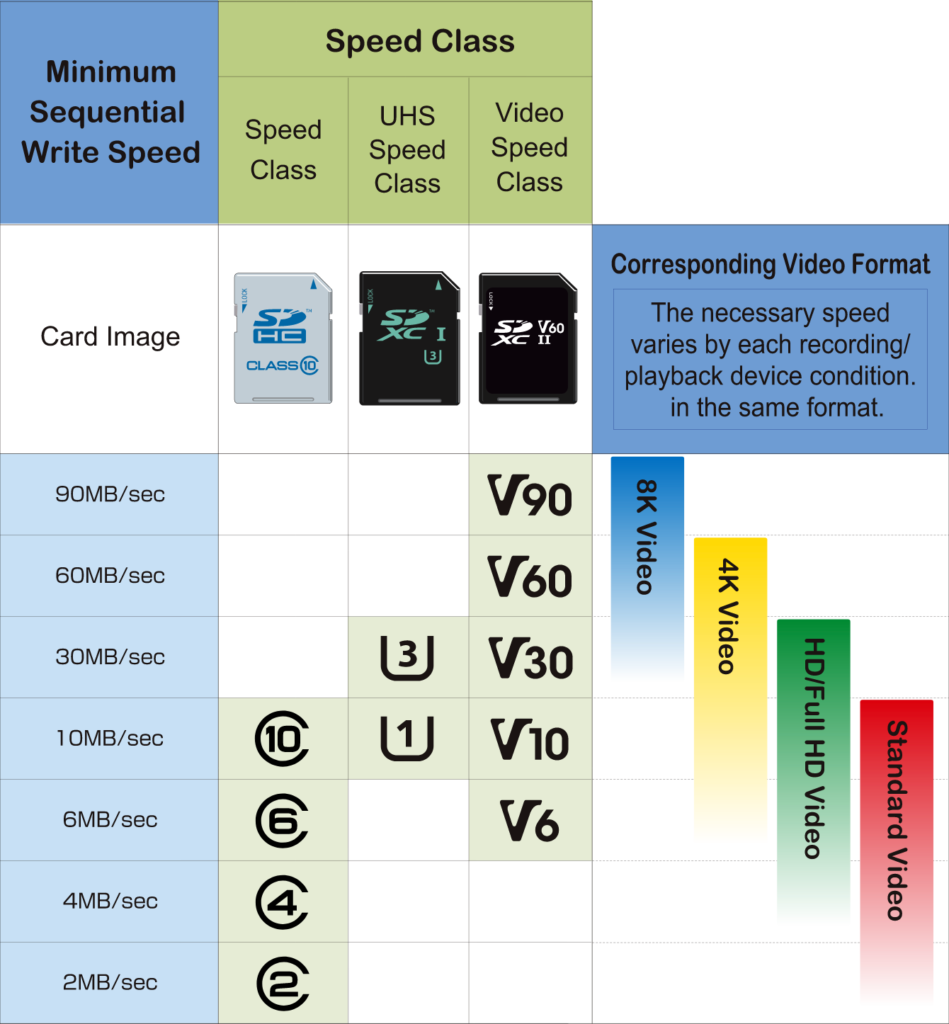
Capacity
The capacity of an SD card indicates how much data it can hold. Cards range from 16GB to 1TB or more, accommodating various storage needs for high-resolution images, videos, and other files.
File Format Compatibility
SDHC (Secure Digital High Capacity) and SDXC (Secure Digital Extended Capacity) are two common formats compatible with different devices. SDHC supports capacities up to 32GB, while SDXC cards can hold up to 2TB of data.
Understanding these specifications simplifies the selection process, ensuring you choose an SD card that aligns with your camera’s requirements and effectively meets your storage and speed needs. Always refer to your camera’s manual to confirm compatibility with specific card types and classes.
Understanding Read and Write Speeds of SD Cards

Read Speed
The read speed of an SD card refers to how quickly data can be retrieved from the card to another device, such as a computer. It’s crucial when transferring files from the card to your computer. A higher read speed facilitates faster data transfer, allowing you to access your photos and videos swiftly.
Write Speed
The write speed signifies how fast the card can save data. This speed is particularly vital when capturing high-resolution images, recording videos, or utilizing burst mode. A higher write speed prevents buffering and delays, ensuring smooth and uninterrupted performance while capturing moments.
Choosing SD Cards for Photography
Selecting the right SD card for photography involves considering various factors based on the specific photography style or needs.
For Portrait or Casual Photographers:
Normal-speed SD cards are suitable for portrait or casual photographers capturing standard moments or portraits, where burst rates are not a primary concern.
For Action or Sports Photographers:
Professional photographers capturing fast-paced action or sports events benefit from high-speed SD cards, allowing rapid consecutive shots.
“Burst Rate” refers to how fast your camera can take several pictures in a row without stopping. It’s like holding down the shutter button to capture a series of shots in a very short time.
Example Scenario:
A portrait photographer may opt for a standard-speed SD card for indoor or studio shoots. Conversely, a sports photographer capturing dynamic action sequences requires a high-speed SD card to ensure no moments are missed during rapid movement. Understanding your photography style helps determine the most suitable SD card.
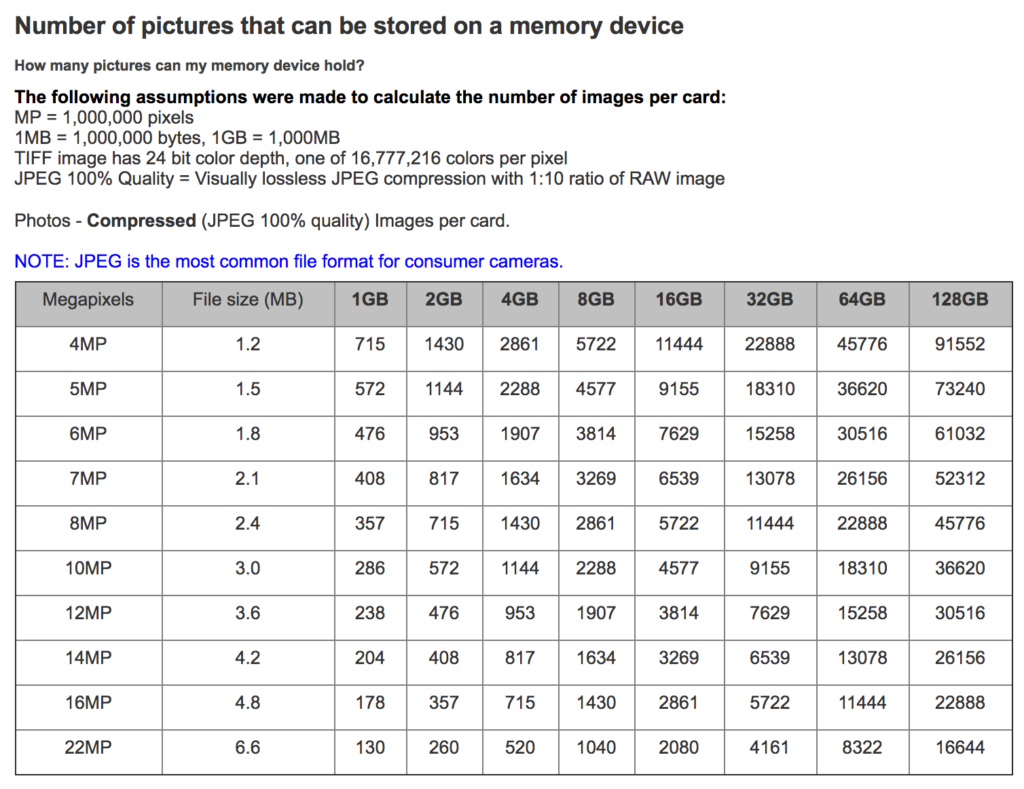
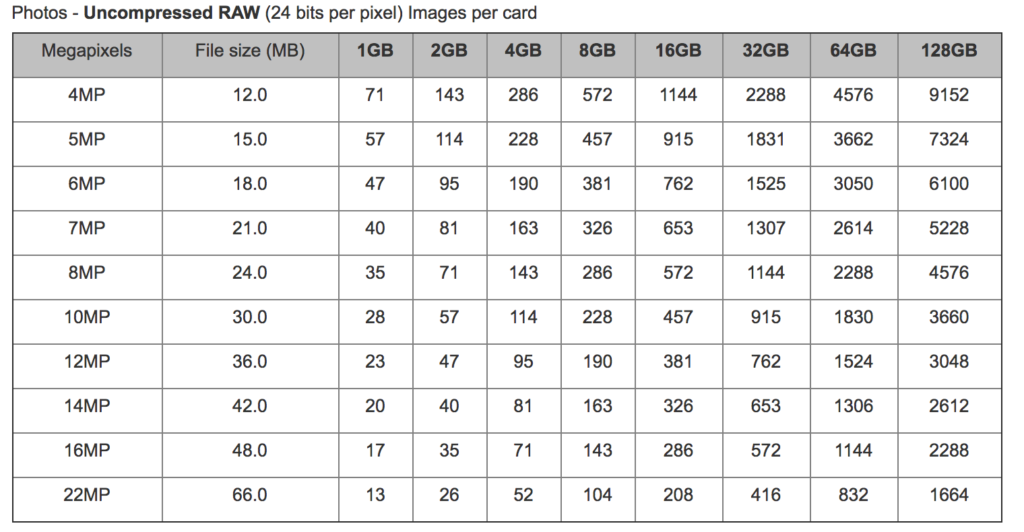
Choosing SD Cards for Videography
Selecting an SD card for video recording involves multiple considerations that impact video quality and duration. Understanding elements such as bit rates, frame rates, and container/file formats is essential.
Bit Rates:
Bit rates quantify the data processed per second during video recording. Higher bit rates signify superior video quality. Faster SD cards manage higher bit rates, ensuring smooth, high-quality video capture.
Frame Rates:
Frame rates measure frames captured per second. Higher frame rates produce smoother videos. Faster SD cards are necessary for higher frame rates to prevent video lag.
Container/File Formats:
Video formats and containers influence video quality and storage. Advanced formats require more storage and performance. Recording in high-quality formats like 4K or RAW demands larger capacity and faster SD cards.
Effects on Video Length, Size, and Quality:
These factors determine overall recording time, file size, and video quality. Longer videos or higher resolutions (e.g., 4K) necessitate SD cards with more storage and faster performance for optimal quality.
Example: Recording a 4K video at 60 frames per second demands a higher capacity and faster SD card compared to shooting at 1080p. Adjusting the card’s capacity and speed based on video requirements ensures smooth recording and excellent quality.
Understanding Video Bit Rates
The bit rate of a video refers to the amount of data processed per second during recording. It significantly impacts the video’s quality and file size. A higher bit rate indicates more data processed, resulting in better video quality and larger file sizes.
For instance, imagine two videos of the same duration and resolution but with different bit rates. The video with a higher bit rate will likely display better image quality, fewer compression artifacts, and smoother motion. Conversely, the lower bit rate video might show pixelation or blurriness in fast-paced scenes due to less data being processed per second.
An SD card with a lower write speed than the video’s bit rate may cause recording interruptions or loss of data.
Discover Your SD Card’s Recording Capacity
You can find out how long you can record videos using your SD card for various settings by referring to the table below.
| Resolution | 24 fps | 30 fps | 60 fps | 120 fps | 240 fps |
| Min/GB | Min/GB | Min/GB | Min/GB | Min/GB | |
| 4K 16:9 | 1.8 | 1.8 | 1.8 | – | – |
| 4K 4:3 | 1.8 | 1.8 | – | – | – |
| 2.7K 16:9 | 3.6 | 3.6 | 1.9 | 2 | – |
| 2.7K 4:3 | 1.8 | 1.8 | 1.8 | – | – |
| 1440P 4:3 | 3.6 | 3.6 | 1.8 | 1.8 | – |
| 1080P 16:9 | 3.6 | 3.6 | 3.4 | 1.9 | 2 |
Let’s consider an example: Suppose you have a 32GB card, and you’re shooting a video at 1080P 16:9 with 24fps. At 3.6GB per minute, if you divide 32GB by 3.6, you’ll get approximately 8.88 minutes of recording. Similarly, for another example, if you have a 256GB card and you’re shooting a video at 4K 4:3 with 30fps, at 1.8GB per minute, dividing 256 by 1.8 gives you around 142.22 minutes of recording.
Camera Compatibility
Your camera’s specifications guide you on which types of SD cards are compatible. These details are typically found in your camera’s manual or specifications.
For example, your camera manual might mention SDHC, SDXC, or specific classes like UHS-I or UHS-II as the supported SD card types. Checking these details helps in picking the right SD card that perfectly fits your camera’s needs, ensuring it works seamlessly without any issues.
Selecting the Perfect SD Card
When choosing an SD card, consider your specific needs, financial constraints, and any future demands that may arise.
For casual photographers, a mid-range SD card with moderate storage capacity and adequate speed might perfectly suffice. SDHC Type I Class 3 SD cards are generally well-suited for regular photography and videography needs, offering ample performance for standard usage scenarios. Similarly, professionals might seek out high-speed, high-capacity cards tailored to handle larger data volumes and faster processing times.
It’s advisable to opt for reputable brands and make purchases from verified stores. This ensures the quality and reliability of your SD card, providing peace of mind and confidence in its performance and longevity.